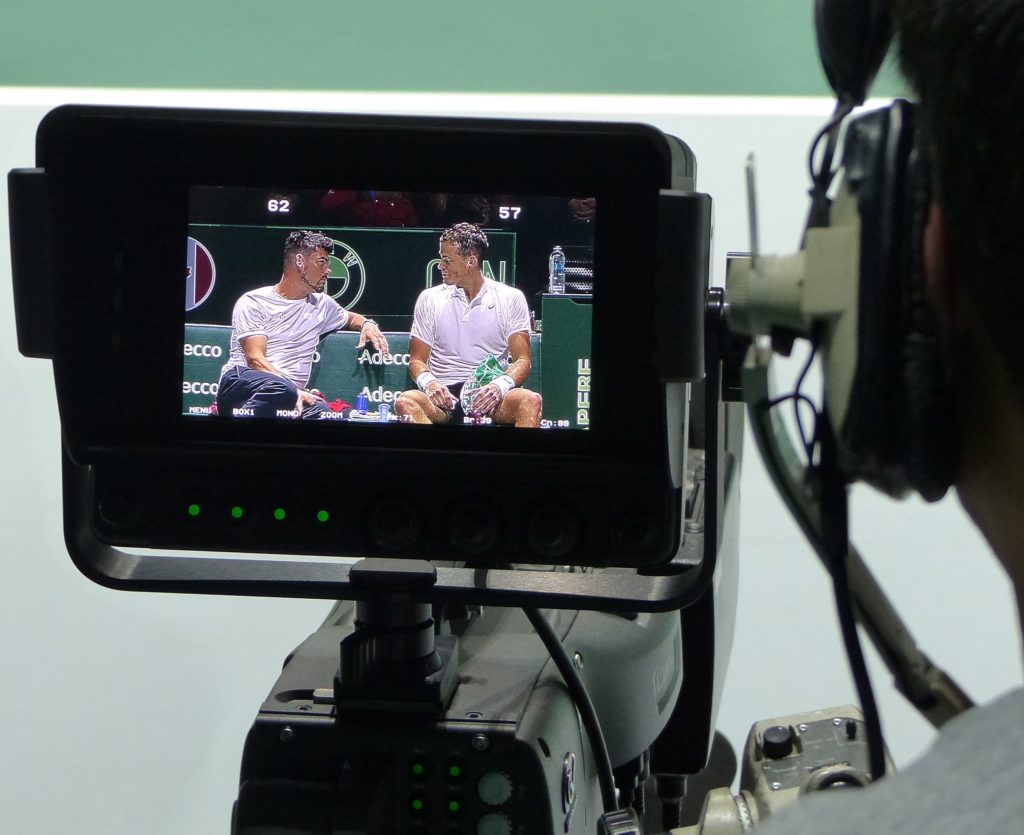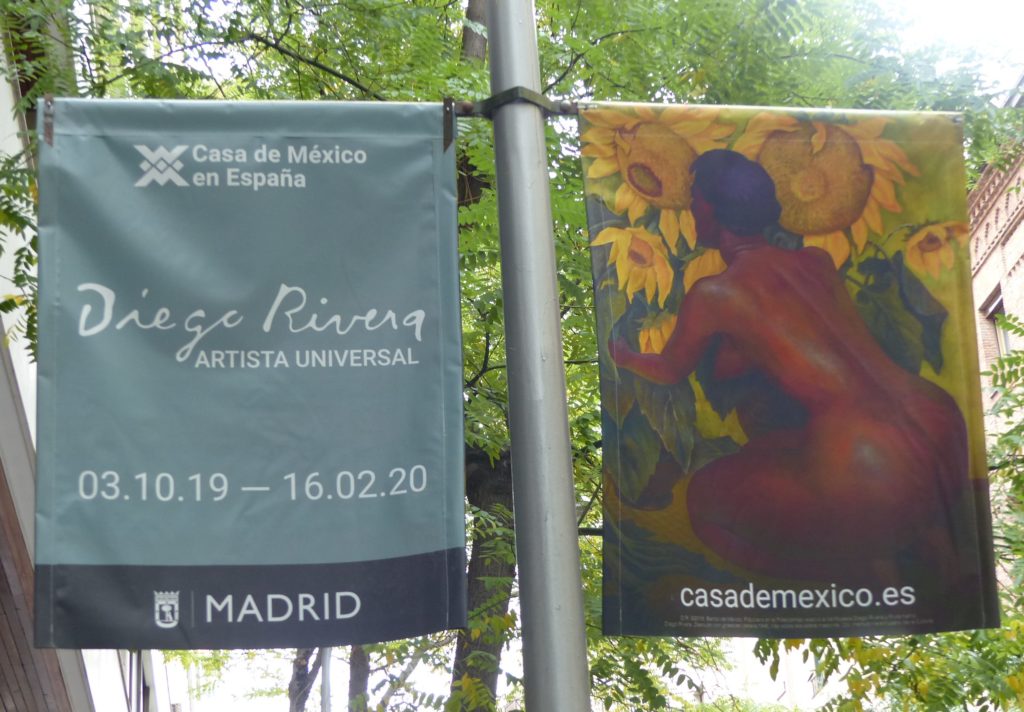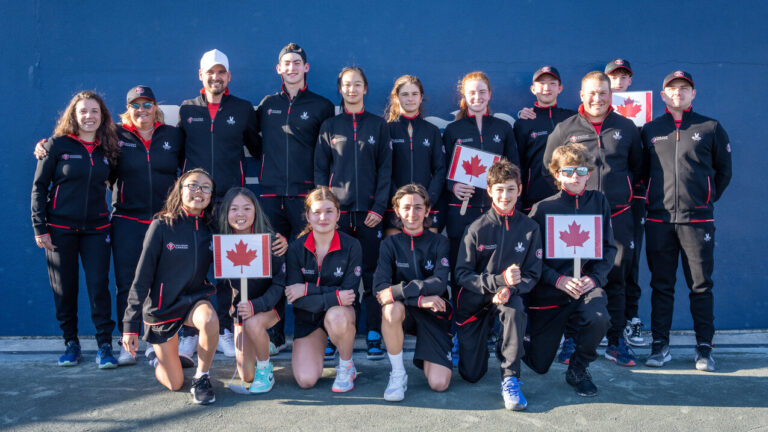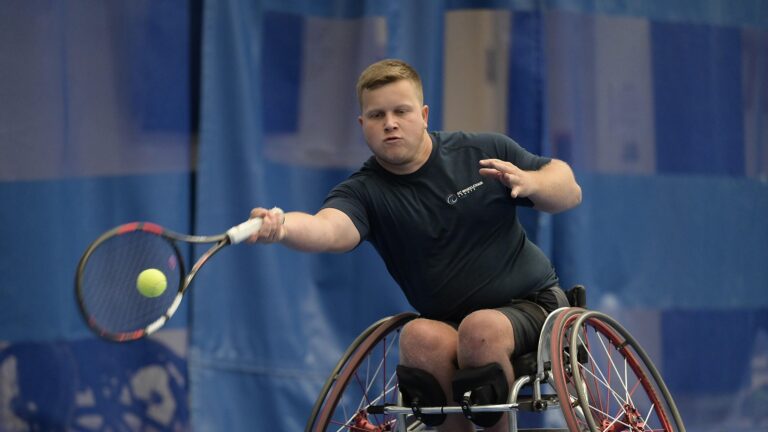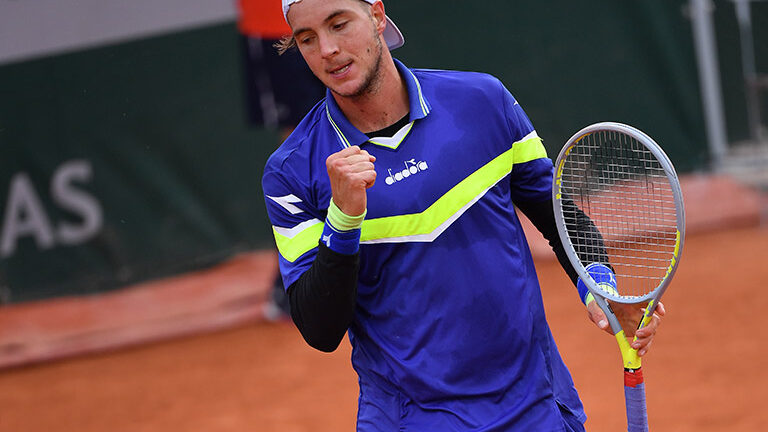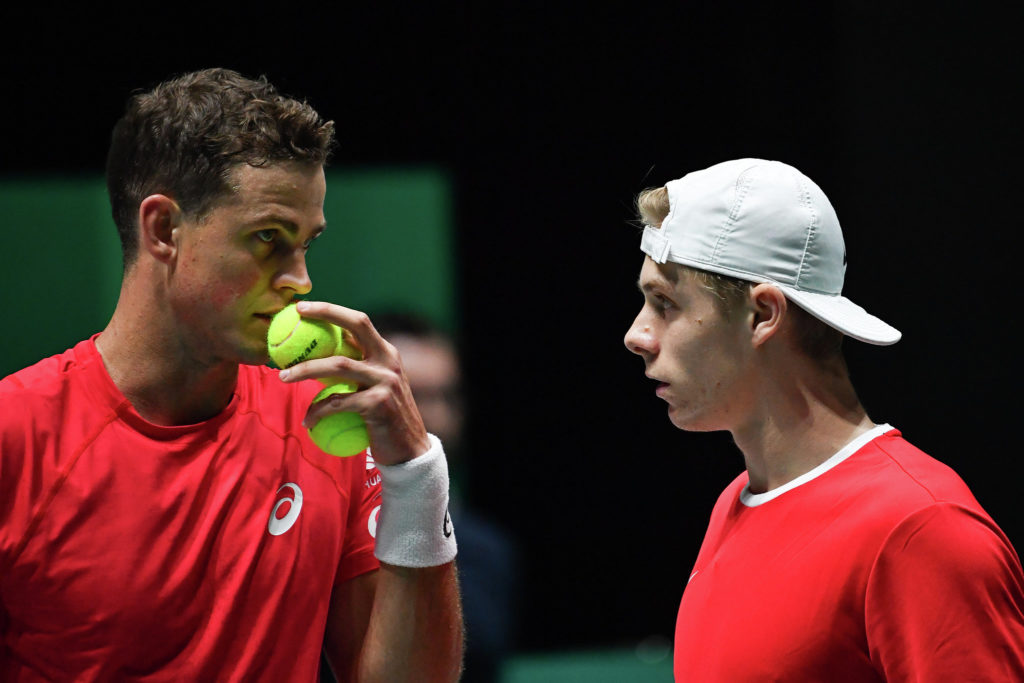
|Photo by: Martin Sidorjak|Photo by: Martin Sidorjak|Photo by: Martin Sidorjak|Photo by: Martin Sidorjak|Photo by: Martin Sidorjak|||||Photo by: Martin Sidorjak
Riding what are high points in their respective careers, Vasek Pospisil and Denis Shapovalov have led Canada into the quarter-finals of the inaugural edition of the revamped Davis Cup Finals.
Both won their singles matches in ties versus Italy on Monday and the United States on Tuesday, making the Canadian team the first to qualify for the final eight in Madrid.
After beating Fabio Fognini on Monday, Pospisil once again showed his grit to withstand the service bombardment – 28 aces – of Reilly Opelka on Tuesday. He overcame the seven-foot American 7-6(5), 7-6(7) before Shapovalov was an unstoppable force in putting away Taylor Fritz 7-6(6), 6-3. Both managed testing moments – Pospisil saving a set point in the second-set tiebreak and Shapovalov twice recovering from a mini-break behind in the opening-set tiebreak.
The doubles third match was awarded 6-0, 6-0 to the Americans after Canada, having clinched a 2-0 victory, did not post a doubles team. “We had a very, very tough two days,” captain Frank Dancevic explained. “You know, the guys put their hearts on the line out on the court and their bodies are… they had some injuries that we didn’t want to risk going into the doubles. They couldn’t really play at the level they’re used to playing. And there was a risk to get hurt going into the practices tomorrow and later on in the week. So it’s best to pull out.”
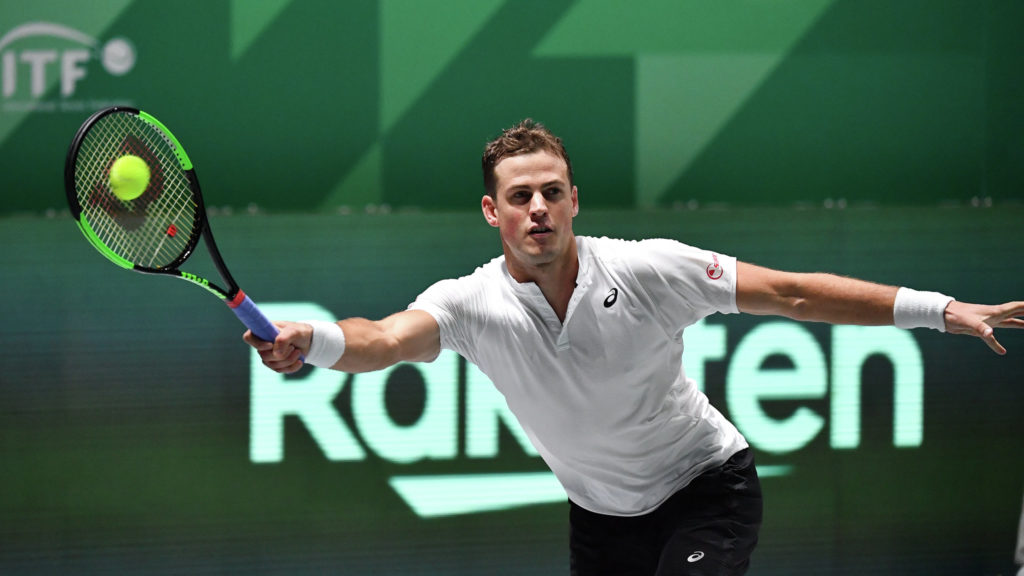
Pospisil has been on a tremendous tear since early last month when he qualified and reached the third round at the Masters 1000 event in Shanghai. His record since then at all levels of the tour is 18-2 – and one loss resulted when he retired (back) against American Tommy Paul after a set in the second round of the Knoxville Challenger two weeks ago.
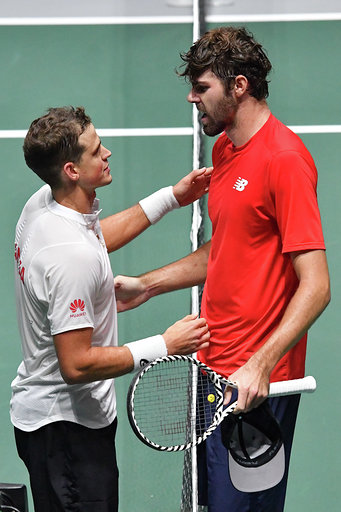
From a rankings low of No. 248 on October 7, which largely resulted from him missing the entire season until Wimbledon in July as a result of herniated-disc back surgery in January, the 29-year-old from Vernon, B.C., is up to No. 150. His high ranking was No. 25 in 2014 but he has struggled with injuries, mostly back-related, on and off since that time.
On Tuesday, after the win over Opelka, Pospisil was asked about whether he expected to have reached this level of performance so soon in his comeback. “No chance,” he responded flatly. “I did not, no chance. No. To be honest, I just wanted to finish the year healthy. That was my goal when I came back. I mean, I had surgery in the lower back. I didn’t even know if I’d be, like, get to this level. I was optimistic – but I’m just saying you never know, right?
“I never had to go through an injury like that. I was still confident I was going to get to this kind of level and play this kind of tennis. But I didn’t expect it to be this quick, no. Especially the last few months, I’m playing – and also my body’s feeling as good as it’s felt in the last three or four years since my initial back injury.”
Shapovalov’s success was much more plausible even though he struggled through the European clay and grass- court seasons with a modest 2-9 record. From a ranking high of No. 20 in early May, he had dropped to No. 38 by the middle of August. Since then he has surged back up to No. 15 – the second highest ATP singles ranking in Canadian history behind Milos Raonic’s No. 3 in 2016.
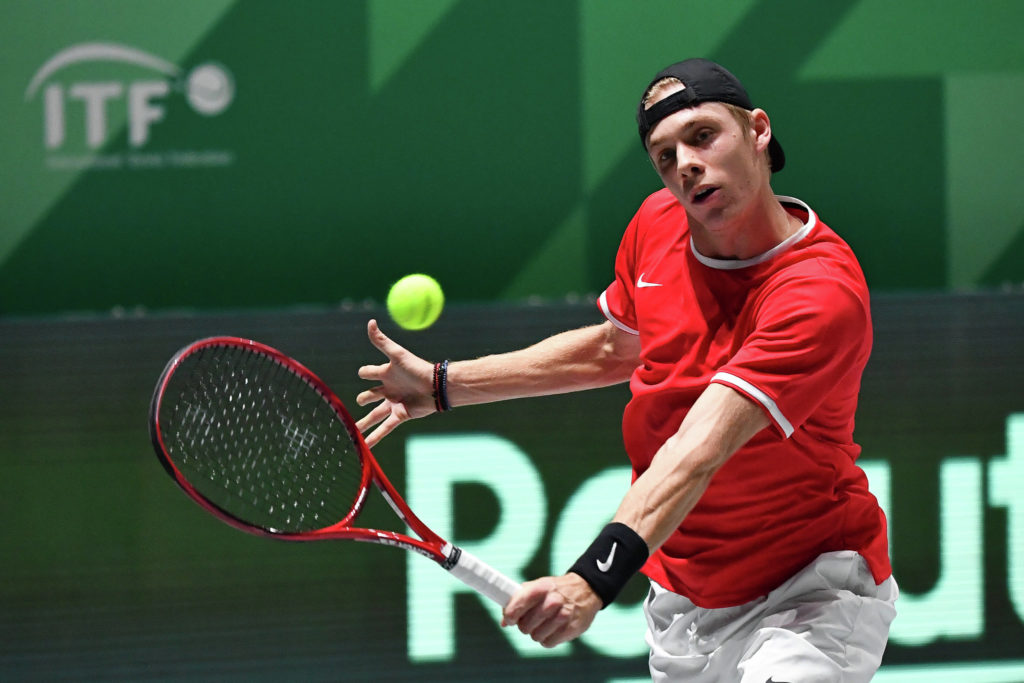
Starting with a semi-final at the Winston Salem ATP 250 event before the US Open, Shapovalov is 21-7, has won his first ATP title in Stockholm and reached the final of his first Masters 1000 event in Paris, losing to then-World No. 1 Novak Djokovic.
With his explosive shot-making and confidence, there’s a distinct sense that other players are intimidated by him – they understand just how well he’s playing and how fearless he is at the moment. He can completely take over a match with his dynamic play.
Despite not being at his best in the first set against Fritz on Tuesday – understandable after more than four hours on court in singles and doubles Monday night versus Italy – he always looked like he was going to win. The bottom line was he just had too much game for the No. 32-ranked American, 22.
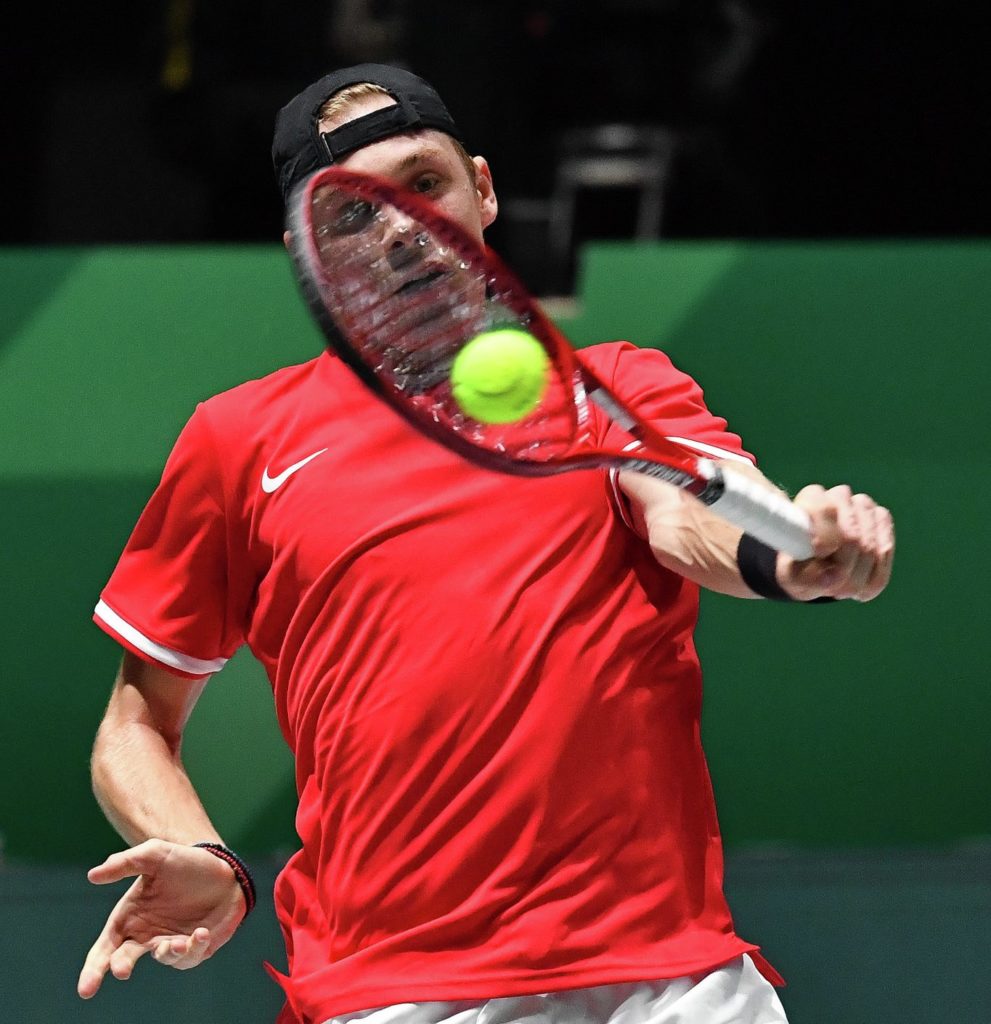
In the kind of form he’s showing these days, ‘too cool for school’ Denis would be fascinating to see matched against No. 6-ranked Stefanos Tsitsipas, winner of the ATP Finals in London on Sunday. He leads the head-to-head with the 21-year-old Greek 2-1 – having won on hard courts at the 2018 Australian Open and 2019 Miami Open. The only loss came at his first clay-court event of the 2018 season in Monte Carlo.
Asked Tuesday if he can tell that his opponents are very wary of him, he replied, “of course I don’t know what they’re thinking. But I definitely think I’m in great shape and I’m playing some great tennis.
“I think the last two matches I’ve been able to really play well. Aside from struggling with the serve a little bit, I think off the ground, off the returns, I played really well and kept the form (a runner-up) from Paris.”
Taylor Fritz has a pretty big game but the winners/unforced errors ratio showed just how dominant Shapovalov was Tuesday night – he was 27/28 while the American was a mere 9/16. And Shapovalov had nine aces to just two for the 6-foot-4 Californian.
Pospisil’s ability to hunker down when it mattered most against Opelka was clear in the stats, which were remarkably even. See below:
| Pospisil | Opelka | |
| 73 | 1st serve % | 71 |
| 82 | 1st serve % won | 87 |
| 50 | 2nd serve % won | 52 |
| 3/3 | Break points saved | 2/2 |
The most important point for Pospisil was that set point for Opelka at 7-6 in the second set tiebreak – he hit a 210 km/hr serve and the rangy American’s forehand return wound up in the net.
Not only were the two American players outmatched on the night in Stadium 2, the Canadian crowd totally overwhelmed the Americans with their numbers and their decibel level. When this reporter entered Stadium 2 before the first match, he counted 13 red Maple Leaf flags in the sparsely-populated arena to just one lonely Stars and Stripes.
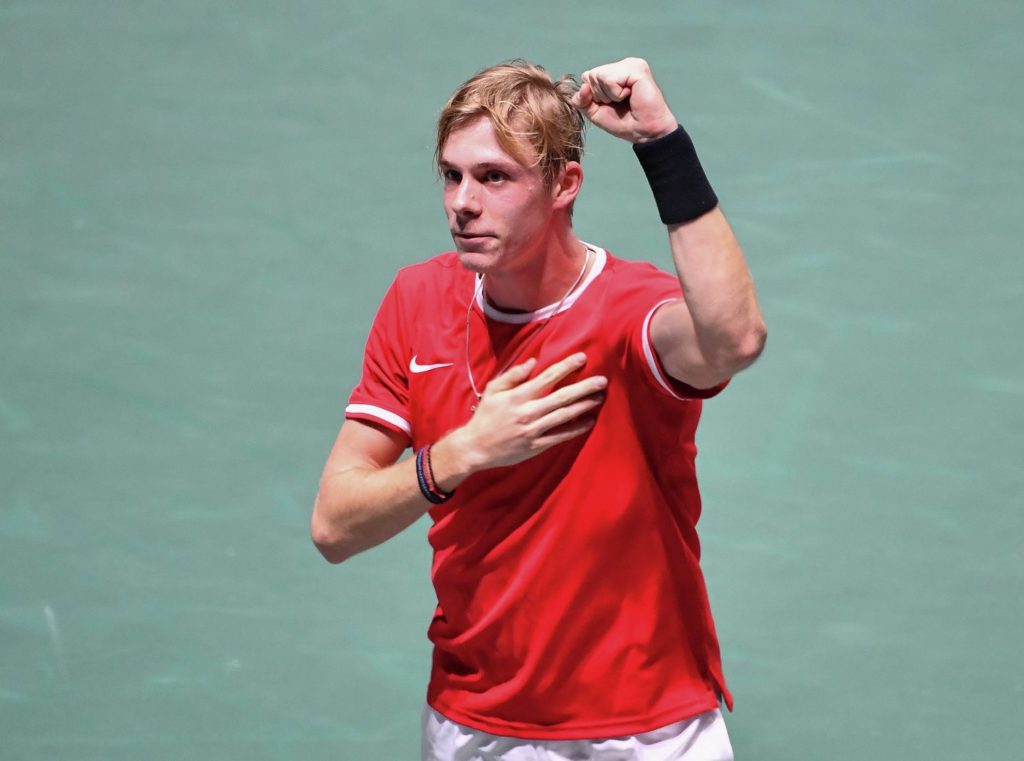
Much has been made about the Canadian victory ending a 0-15 Davis Cup head-to-head against the USA dating back to 1913. But it’s all rather irrelevant – in 1913 Davis Cup was a totally different and more exclusive competition. It really wasn’t until the Challenge Round (the defending champion stayed out all year and then just ‘defended’ in the final) ended in 1972 and the World Group began in 1981 that the modern era began.
Canada has not played the United States since 1965 when the late Arthur Ashe and the late Eugene Scott defeated Keith Carpenter and Harry Fauquier 3-0 in Bakersfield, California. Carpenter and Fauquier subsequently became partners in the Tennex Systems tennis-court construction business in Toronto and have for years done the courts for Rogers Cup at Sobeys Stadium.
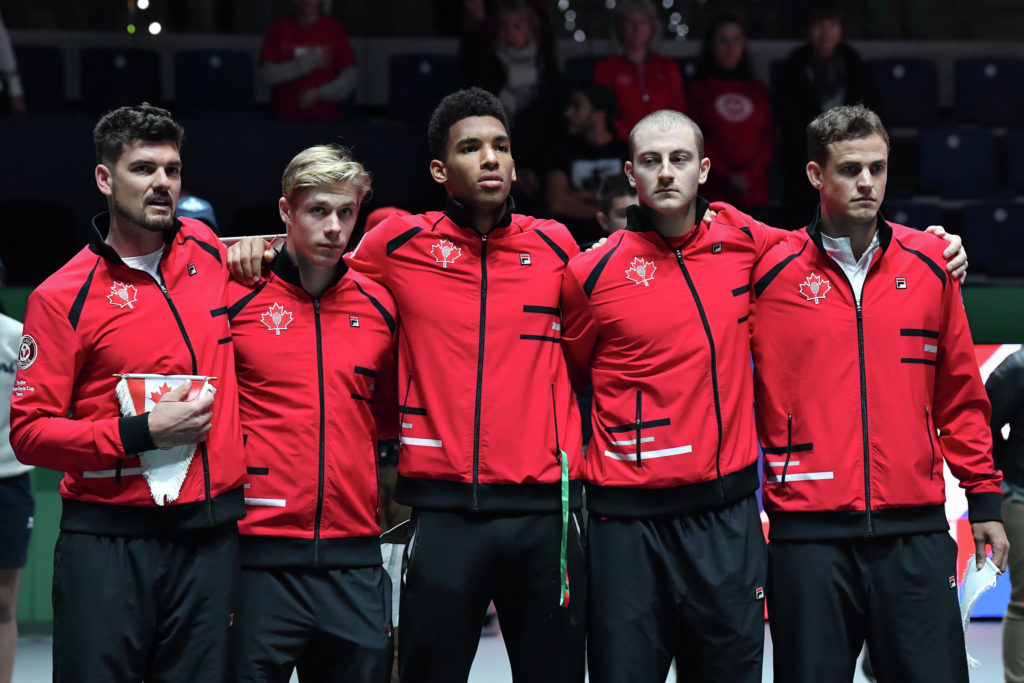
After his team lost, U.S. captain Mardy Fish, who joked that he got his first win as a captain when Canada defaulted the doubles, remarked about his opponents on Tuesday, “they’ve got a great team. They have another great player (Félix Auger-Aliassime) that didn’t play today as well.
They’re going to be around for a long time. So are these (his American) guys. I imagine that we’re going to have quite a few battles with them over the years.”
The concept of Canada being so competitive with the United States at the moment, with a potential power-packed line-up that includes Shapovalov, Pospisil, No. 21 Auger-Aliassime, No. 31 Raonic and No. 103 Brayden Schnur, actually dates back to about 2012 when Raonic and Pospisil were emerging and Daniel Nestor was still a major force in doubles. That potential Davis Cup line-up could have provided potent opposition for any American team at the time.
While the last Canada – USA Davis Cup meeting was in 1965, Canada vs. Australia goes back one year earlier to 1964 on the grass courts of the Mount Royal Tennis Club in Montreal. Then a stacked Australian line-up of Roy Emerson, John Newcombe and Tony Roche defeated the hosts’ players – Carpenter and Francois Godbout – by a 3-0 score.
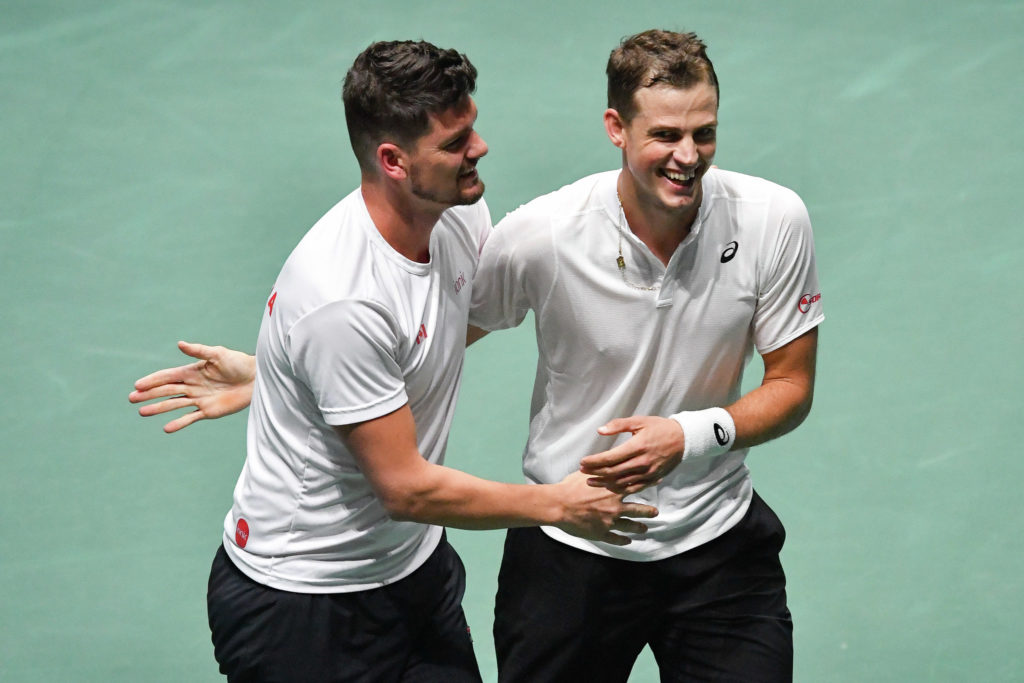
The Canada – Australia rivalry could resume with an entirely new cast of characters if the Aussies defeat Belgium in a final round-robin tie on Wednesday in Madrid.
Then it would likely be Nick Kyrgios vs. Pospisil in the first singles match and Alex de Minaur vs. Shapovalov in the second in the quarter-finals.
The Australians and Belgians, featuring No. 11-ranked David Goffin, are playing Wednesday evening so the Canada versus either of those nations would be on Thursday at 6 p.m. (noon ET in Canada). “If it is Australia,” Shapovalov said, “I do know Alex and you (turning to Pospisil) know them as well, and Nick of course. But I think it comes down to kind of how we’re playing. We’ve been playing some great matches. We are feeling good on the court.”
It would be ironic if Australia was to emerge as Canada’s opponent in the quarter-finals. Then, after more than half a century of no Davis Cup competition between it and two nations that it has historically been politically and culturally closely aligned with, would end with Canada facing both of them back-to-back over three days.
POST CARD
One of the hottest art exhibitions in Madrid at the moment is the recently opened one featuring the work of the great Mexican artist Diego Rivera. These banners can be seen in many parts of the city.
(Feature Photo: Martin Sidorjak)
